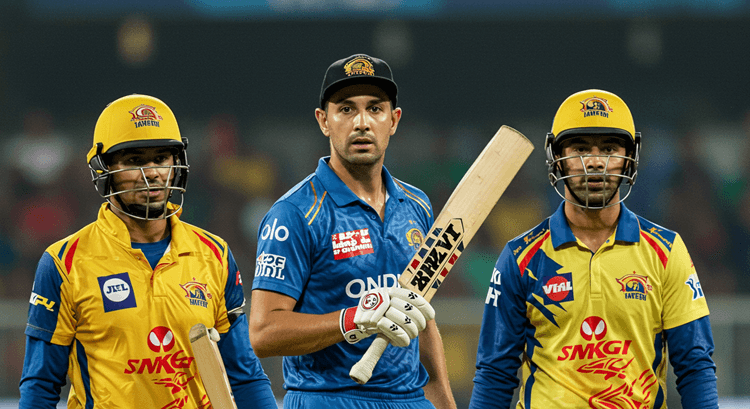How Leagues Like IPL Are Changing the Sport
Cricket has undergone a dramatic transformation in the past two decades, with franchise-based leagues like the Indian Premier League (IPL) leading the way. The advent of T20 franchise cricket has not only revolutionized the sport’s commercial aspects but has also significantly influenced player development, team strategies, and global fan engagement. As leagues such as the IPL, Big Bash League (BBL), and Caribbean Premier League (CPL) continue to flourish, cricket’s traditional structure is experiencing a major shift.
The Growth of Franchise Cricket
Franchise-based cricket leagues emerged as a response to the growing demand for a shorter, more entertaining version of the game. The IPL, launched in 2008, set the blueprint for other leagues worldwide, offering a mix of sports and entertainment. The success of the IPL inspired the creation of similar leagues in Australia, England, the West Indies, Pakistan, and South Africa, turning cricket into a year-round spectacle.
These leagues attract top players from around the world, fostering a competitive environment where international stars play alongside emerging talents. This exposure helps younger players gain experience and confidence, shaping them into well-rounded cricketers.
Financial Impact and Commercial Success
Franchise cricket has brought unprecedented financial success to the sport. The IPL, for instance, has become one of the wealthiest leagues in the world, generating billions in revenue through sponsorships, broadcasting rights, and ticket sales. Cricketers who once relied primarily on national contracts now have the opportunity to earn lucrative deals through franchise tournaments.
Additionally, franchise leagues have increased cricket’s global reach, bringing in new fans and markets. The infusion of corporate investments and brand endorsements has elevated cricket’s commercial appeal, making it more financially viable for players, teams, and cricket boards.
Evolution of Playing Styles and Strategies
The rise of franchise cricket has significantly influenced playing styles and team strategies. With the T20 format demanding aggressive batting, innovative shot-making, and dynamic fielding, cricketers have adapted their skills to meet these new challenges. Bowlers, too, have had to develop variations such as slower balls, yorkers, and mystery spin to counter powerful hitters.
Captains and coaches now emphasize data analytics, match simulations, and tactical innovations to gain an edge over opponents. Strategies like impact players, power-hitting specialists, and adaptable batting orders have become common in modern cricket, further blurring the lines between franchise and international formats.
Impact on International Cricket
While franchise leagues have boosted cricket’s popularity, they have also posed challenges to international cricket. The packed calendar of T20 leagues often leads to scheduling conflicts, with some players prioritizing franchise commitments over national duties. This has sparked debates about player workload management and the potential decline of bilateral series and traditional formats like Test cricket.
Cricket boards are now exploring ways to balance franchise cricket with international commitments. Some boards have introduced central contracts with higher pay to retain their top players, while others have embraced franchise leagues as a means to develop talent and generate revenue.
The Globalization of Cricket
Franchise leagues have played a crucial role in globalizing cricket. Countries with limited cricketing history, such as the USA and UAE, are now hosting their own franchise tournaments, expanding the sport’s footprint. The Major League Cricket (MLC) in the USA is a prime example of how franchise-based models can introduce cricket to new audiences and develop infrastructure in non-traditional markets.
Moreover, the format has enabled players from associate nations to compete at higher levels, improving their skills and enhancing their national teams’ competitiveness. This inclusivity is vital for cricket’s long-term growth and diversification.
The Future of Franchise Cricket
As franchise cricket continues to evolve, it is likely to influence cricket’s structure even further. With talks of expanding leagues, introducing new formats, and integrating technology-driven enhancements, the sport is entering an exciting era. The challenge for cricket administrators will be to ensure a sustainable balance between franchise and international cricket, maintaining the integrity of both.
While traditionalists may argue that franchise cricket is diminishing the importance of Test and ODI formats, its impact on cricket’s growth and modernization is undeniable. The rise of leagues like the IPL has redefined the game, making it more entertaining, financially viable, and globally accessible.
Conclusion
Franchise cricket has undeniably changed the landscape of the sport, bringing in financial prosperity, global reach, and tactical evolution. While challenges remain, particularly regarding player workload and international scheduling, the positives outweigh the negatives. As the sport continues to adapt to modern demands, franchise leagues will remain at the forefront of cricket’s evolution, shaping the future of the game for years to come.



Comments are closed.